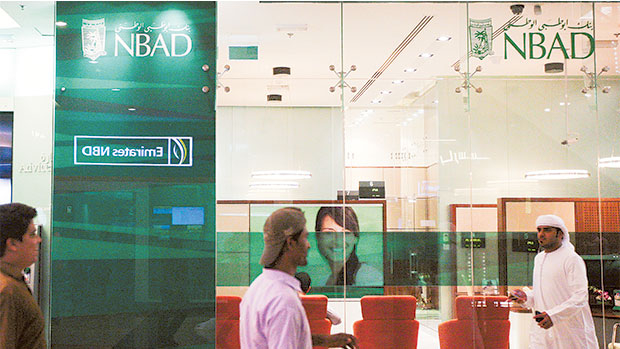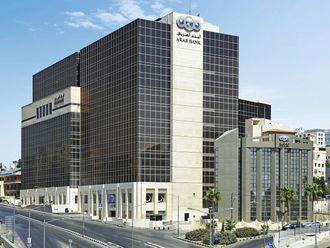
Dubai: Gulf region’s top three national banks — Qatar National Bank (QNB) National Bank of Abu Dhabi (NBAD); and National Bank of Kuwait (NBK) — share solid fundamentals and are among the top 5 per cent of banks rated by Moody’s globally.
Their Aa3 deposit ratings are just one notch below the ratings of their respective sovereigns due to dominant franchises in their respective countries and strong financial performances.
According to Moody’s, solid operating environments in home markets support the strong financial fundamentals of these banks over the next 12-18 months. High public spending in Qatar, UAE and Kuwait is expected to stimulate growth in the banks’ home markets and create lending opportunities.
“We project non -performing loans [NPLs] to remain low as a result, below 4 per cent of loans by end-2014 and into 2015. Also we anticipate all three banks will maintain solid capital buffers [with Tier 1 ratio of 14 per cent -16 per cent], owing to their ability to retain healthy profits to build capital and fund lending growth, ” said Elena Panayiotou , Assistant Vice President at Moody’s.
QNB is expected to remain the most profitable with return on average assets (RoAA) at 2.2 per cent to 2.4 per cent in 2014-15, compared to RoAA of approximately 1.5 per cent to 2 per cent for NBAD and NBK.
“We consider all three banks to be systemically important and expect them to continue to benefit from a very high probability of support from their respective governments, in case of need,” said Alexios Philippides, an analyst at Moody’s.
Solid domestic operating conditions are expected to support all three bank in terms of lending growth and asset quality. Moody’s project QNB’s lending growth to be in the range of 10 per cent to 15 per cent in 2014-15 supported by vast government spending on infrastructure and other related projects, with an estimated $160 billion (Dh587 billion) earmarked by the government for the period 2014-2021.
Projects
The rating agency expects more moderate growth for NBAD and NBK in 2014 (below 10 per cent) driven by high public spending in UAE and Kuwait, which will stimulate growth in the non-oil economy to around 5 per cent — 6 per cent.
The government of Abu Dhabi, for which NBAD is the primary banker, has budgeted projects of around $90 billion for 2013-17 which will create business opportunities for the bank. Likewise, NBK’s lending growth is expected to pick up in line with the long awaited increase in tendering activity in Kuwait. For the first quarter of 2014, contracts estimated at $194 billion worth of projects had already been awarded in Kuwait, while a further $22 billion were earmarked for the second quarter.
As a result of the favourable economic conditions domestically, analysts expect these banks will maintain sound asset quality. While QNB is expected to report the highest asset quality among the three, the large number of Abu Dhabi government and its related entity loans in NBAD’s portfolio (36 per cent of total loans as of end-2013) to support a low level of overall delinquencies.
“Although the bank reports the highest ratio of non-performing loans of the three owing to legacy delinquencies following the global crisis, we expect its asset quality to strengthen in line with accelerated growth in the non-oil economy in the UAE and larger spending by the Abu Dhabi government. We project an NPL-to-total loans ratio of below 4 per cent over the course of 2015,” said Philippides.
For NBK, we expect the NPL ratio to remain broadly stable, well below 3 per cent by end-2015, in line with the stable operating conditions in the country. All three banks will maintain high capital levels supported by strong earnings and profit retention.












